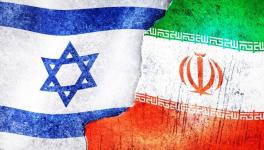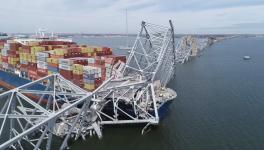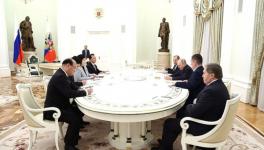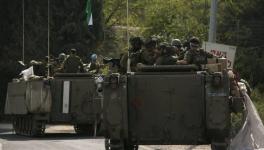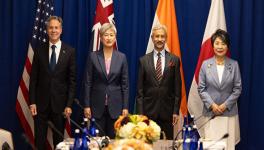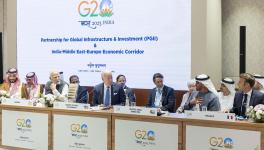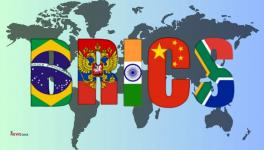America Bends to Reality on the Standoff on North Korea

It seemed the only logical thing to do. America had to back down. It was left with no choice. If Trump had continued to insist that North Korea should first get ride of its nuclear weapons before any dialogue is possible, he might have lost more allies in North-East Asia. Popular sentiment in South Korea bends towards a reconciliation across the Demilitarized Zone (DMZ). Even the Japanese people seem eager to remove the threat from North Korean missiles. In fact, in 2009, the Japanese people had voted to essentially remove the US base at Okinawa, one of the threats against North Korea. The appetite in North-East Asia is for peace. Trump and the US establishment would not like to be alone with their sabre-rattling.
Perhaps matters are not so simple. Perhaps the US does not actually intend to end the conflict. A closer look at what the American and Japanese government have been saying leads to less optimistic conclusions. They have a vested interest in this conflict. It would be difficult to so easily end it.
The two Koreas – North and South – had made great strides towards setting a table for serious peace talks (as I had noted last week). Envoys have been exchanged; promises have been made about a summit between the two leaders in April. If this were merely a Korean dispute, then one could confidently have said that the standoff in the peninsula has been broken. Now, one could say that all that remained were the details. For instance, how would the North and South prove to each other that they had no bad intentions? What kind of denuclearization timetable should be established? Would there be the allowance for more intra-Korean tourism and travel?
American Power.
But, of course, this is not an ordinary conflict. It has much wider ramifications. It includes a country that should have no business with Korean affairs, since it shares no borders with Korea nor is it even in the same hemisphere. This country, of course, is the United States. Why does the US have any interest in the peninsula’s politics?
Firstly, the United State went into Korea in the late 1940s to prevent a Communist revolution in the country. It colluded with the Japanese rightwing, even fascist, politicians to defeat the Communists. Among those fascists was Nobusuke Kishi, held as a Class A war criminal by the Americans but then released into the Prime Minister’s office as the best likely American candidate for the post. This anti-Communist alliance between the Americans and people like Kishi was central to the American plans for ‘stability’ in North-East Asia. That war that the Americans prosecuted in Korea went from 1950 to 1953, and exists till today – it is principally a hold-over of the Cold War’s anti-Communism.
Second, the United States built a military infrastructure in North-East Asia to prevent Soviet and Chinese expansion and to build a perimeter of American power from Japan to the Philippines. A set of bases stood as sentinels of American power in Asia. Encirclement of China and Russia remains a theme. Japan’s right wing government, now led by Shinzo Abe (the grandson of Nobusuke Kishi), shares this view of American power and the threats from China and Russia. The need for this American military wall is strong amongst the Japanese right-wing, who are also eager for Japan to get rid of Article 9 from its Constitution that prevents an aggressive military.
There are serious intentions at work here. It is American and Japanese policy, not the caprice of Trump and Abe, that is the problem here. Both the United States and Japan are pledged to US domination of North-East Asia. They do not want to build a regional basis of security in which China and Russia must play a role. Given the hostile language from Washington that predates Trump, it is no surprise that the Chinese and the North Koreans feel threatened by the massive US military presence in the region. There is no possibility of a regional security discussion as long as the US military continues to play an outsize role in the area.
There are currently almost 100,000 US forces in the region, spread out between Japan, South Korea, Guam, the Philippines and the US Seventh Fleet. In Japan itself, the US has 112 military bases and 50,000 troops. At Yokosuka (Japan), the US navy permanently bases its nuclear-powered aircraft carrier the USS Ronald Reagan. The US air force has B-1B Lancer bombers in both Japan and Guam. These are aircraft capable of firing nuclear weapons at North Korea. During last year’s Japan-US drill in August, two such B-1B bombers flew in the vicinity of North Korea. One can imagine the fear that this generates in the peninsula.
Overtures of Peace?
Trump said he would meet Kim in May, but the offer seemed staged. White House Spokeswoman Sarah Sanders said, ‘We look forward to the denuclearization of North Korea. In the meantime, all sanctions are maximum pressure must remain’. There was neither any gesture that the US would begin to draw down sanctions nor was there a suggestion for regional de-nuclearization. The onus is on North Korea. It is doubtful that the North Koreans would accept this pathway.
Language from the right-wing Japanese government is equally stark. Japanese Defense Minister Itsunori Onodera said that first North Korea must abandon its nuclear weapons development before there could be ‘meaningful talks’. The conservative Yomiuri Shimbun newspaper indicated that any dialogue with the North is meaningless. The paper quoted Japan’s Chief Cabinet Secretary Yoshihide Suga as saying that ‘past dialogues did not lead to denuclearization.’ In other words, the Japanese objective – to force a North Korean surrender –is not going to be met by this process.
It is good news that there will be this dialogue between North and South Korea in April. It is also good news that Trump will meet Kim in May. What is not clear is whether the Americans and the Japanese will allow the Koreans to make peace. They might like to keep the Korean people hostage in order to make sure that the American-Japanese arrangements are maintained on the Pacific Rim.
Get the latest reports & analysis with people's perspective on Protests, movements & deep analytical videos, discussions of the current affairs in your Telegram app. Subscribe to NewsClick's Telegram channel & get Real-Time updates on stories, as they get published on our website.









